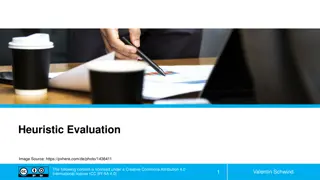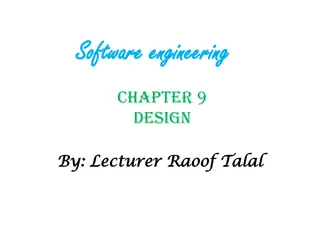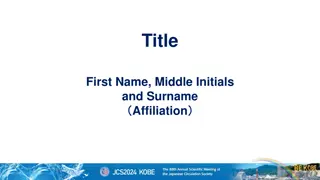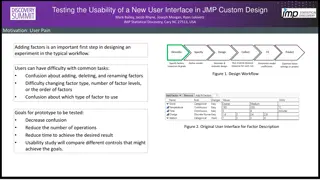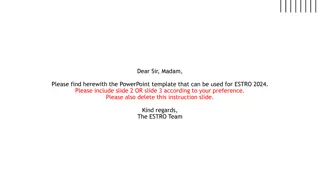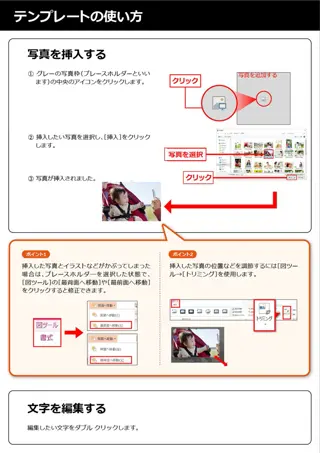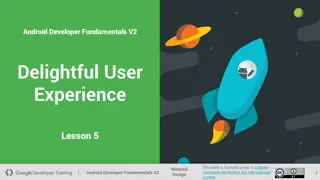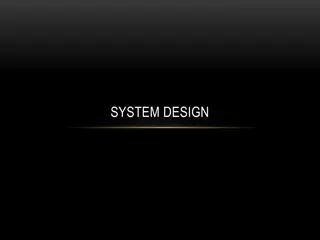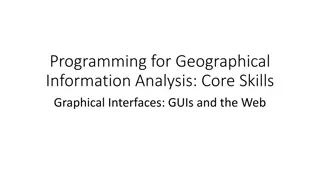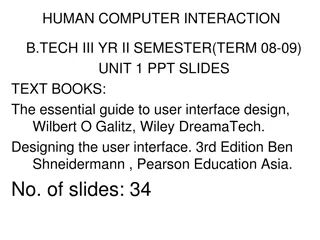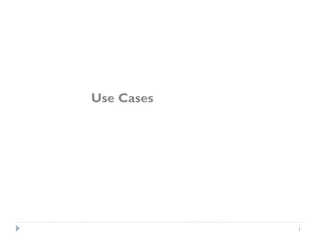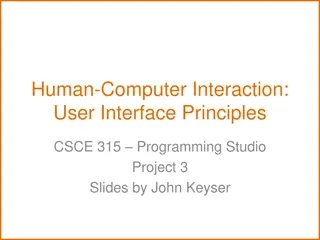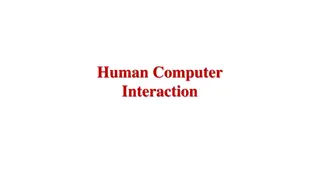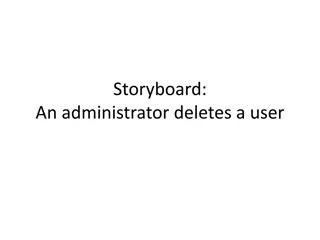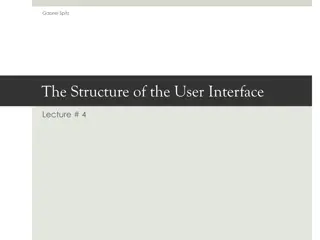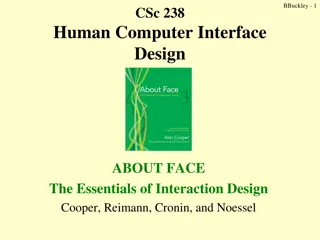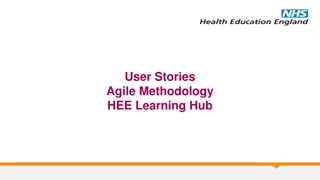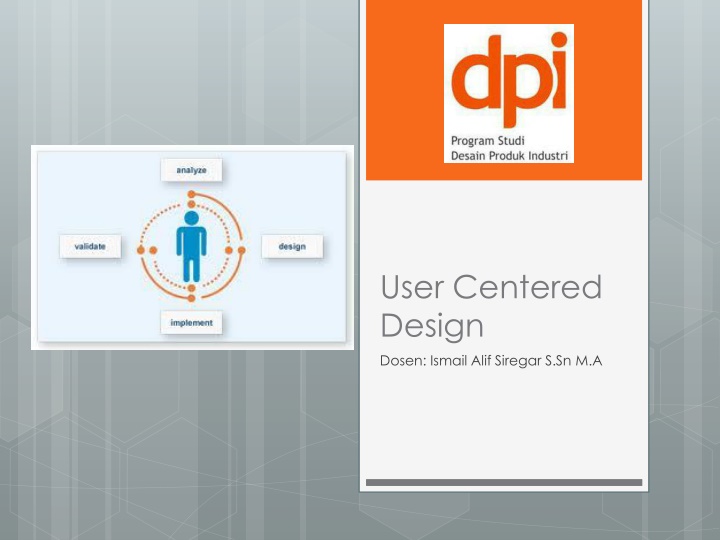
User-Centered Design: Key Principles and Approaches
User-Centered Design (UCD) prioritizes the needs and preferences of end-users at every stage of the design process. This article explores the core principles of UCD, highlighting its focus on optimizing products to align with user behaviors rather than forcing users to adapt. Various models and approaches of UCD, such as cooperative design and participatory design, are discussed. The ISO standard for human-centered design and the application of UCD in website development are also covered.
Download Presentation

Please find below an Image/Link to download the presentation.
The content on the website is provided AS IS for your information and personal use only. It may not be sold, licensed, or shared on other websites without obtaining consent from the author. If you encounter any issues during the download, it is possible that the publisher has removed the file from their server.
You are allowed to download the files provided on this website for personal or commercial use, subject to the condition that they are used lawfully. All files are the property of their respective owners.
The content on the website is provided AS IS for your information and personal use only. It may not be sold, licensed, or shared on other websites without obtaining consent from the author.
E N D
Presentation Transcript
User Centered Design Dosen: Ismail Alif Siregar S.Sn M.A
user-centered design (UCD) user-centered design (UCD) is a type of user interface design and a process in which the needs, wants, and limitations of end users of a product are given extensive attention at each stage of the design process.
The chief difference from other product design philosophies is that user-centered design tries to optimize the product around how users can, want, or need to use the product, rather than forcing the users to change their behavior to accommodate the product.
UCD models and approaches Cooperative design: involving designers and users on an equal footing. This is the Scandinavian tradition of design of IT artifacts and it has been evolving since 1970.[1] Participatory design (PD), a North American term for the same concept, inspired by Cooperative Design, focusing on the participation of users. Since 1990, there has been a bi-annual Participatory Design Conference.[2] Contextual design, customer-centered design in the actual context, including some ideas from Participatory design[3]
ISO standard Human-centred design for interactive systems (ISO 9241-210, 2010). The design is based upon an explicit understanding of users, tasks and environments. Users are involved throughout design and development. The design is driven and refined by user-centred evaluation. The process is iterative. The design addresses the whole user experience. The design team includes multidisciplinary skills and perspectives.
UCD of a web site, for instance, seeks to answer the following questions: Who are the users of the document? What are the users tasks and goals? What are the users experience levels with the document, and documents like it? What functions do the users need from the document? What information might the users need, and in what form do they need it? How do users think the document should work? What are the extreme environments? Is the user multitasking? Does the interface utilize different inputs modes such as touching, spoken, gestures, or orientation?
Elements Accessibility Users should be able to find information quickly and easily throughout the document, regardless of its length. Users should be offered various ways to find information (such as navigational elements, search functions, table of contents, clearly labeled sections, page numbers, color- coding, etc.). Navigational elements should be consistent with the genre of the document. Chunking is a useful strategy that involves breaking information into small pieces that can be organized into some type meaningful order or hierarchy. The ability to skim the document allows users to find their piece of information by scanning rather than reading. Bold and italic words are often used. Legibility Text should be easy to read: Through analysis of the rhetorical situation, the designer should be able to determine a useful font style. Ornamental fonts and text in all capital letters are hard to read, but italics and bolding can be helpful when used correctly. Large or small body text is also hard to read. (Screen size of 10-12 pixel sans serif and 12-16 pixel serif is recommended.) High figure-ground contrast between text and background increases legibility. Dark text against a light background is most legible. Language Depending on the rhetorical situation, certain types of language are needed. Short sentences are helpful, as are well-written texts used in explanations and similar bulk-text situations. Unless the situation calls for it, jargon or technical terms should not be used. Many writers will choose to use active voice, verbs (instead of noun strings or nominals), and simple sentence structure.
Rhetorical situation A user-centered design is focused around the rhetorical situation. The rhetorical situation shapes the design of an information medium. There are three elements to consider in a rhetorical situation: Audience, Purpose, and Context.
Audience The audience is the people who will be using the document. The designer must consider their age, geographical location, ethnicity, gender, education, etc. Purpose The purpose is what the document targets or what problem the document is trying to address. Context The context is the circumstances surrounding the situation. The context often answers the question: What situation has prompted the need for this document? Context also includes any social or cultural issues that may surround the situation.
Analysis tools used in user- centered design Persona Scenario
PERSONA Persona of the user's need may be created. It is a fictional character with all the characteristics of the user. Personas are created after the field research process, which typically consists of members of the primary stakeholder (user) group being observed on their behaviour, and additionally answering questionnaires or participating in interviews, or a mixture of both. After results are gathered from the field research, they are used to create personas of the primary stakeholder group. Often, there may be several personas concerning the same group of individuals, since it is almost impossible to apply all the characteristics of the stakeholder group onto one character. The character depicts a "typical" stakeholder, not an "average" individual in the primary stakeholder group, and is referred to throughout the entire design process.[5] There are also what's called a secondary persona, where the character is not a member of the primary stakeholder group and is not the main target of the design, but their needs should be met and problems solved if possible. They exist to help account for further possible problems and difficulties that may occur even though the primary stakeholder group is satisfied with their solution. There is also an anti-persona, which is the character which the design process is not made for.
SCENARIO scenario created in the UCD process is a fictional story about the "daily life of" or a sequence of events with the primary stakeholder group as the main character. Typically, a persona that was created earlier is used as the main character of this story. The story should be specific of the events happening that relate to the problems of the primary stakeholder group, and normally the main research questions the design process is built upon. These may turn out to be a simple story about the daily life of an individual, but small details from the events should imply details about the users, and may include emotional or physical characteristics
References ^ Greenbaum&Kyng (eds): Design At Work - Cooperative design of Computer Systems, Lawrence Erlbaum 1991 ^ Schuler&Namioka: Participatory Design, Lawrence Erlbaum 1993 and chapter 11 in Helander s Handbook of HCI, Elsevier 1997 ^ Beyer&Holtzblatt, Contextual Design, Kaufmann 1998
tugas Persona scenario
persona PRIMARY Penglihatan rabun Tidak bisa berjalan kursi roda Dalam rumah Gelap SECONDARY Orang dewasa lain di dalam rumah tersebut ANTI-PERSONA Anak kecil
scenario Berada di dalam rumah, alat bantu melihat pada saat gelap. Alat bantu melihat tersebut harus mudah di jangkau dan di gunakan oleh orang yang berkursi roda. Benda tersebut juga harus mudah di lihat dan di pegang, karena user sudah rabun dan mobilitas nya sangat terbatas karena berkursi roda. Keberadaan alat tersebut harus selalu berada di dekat user agar user tidak perlu repot dan susah saat ingin menggunakannya. Terutama jika tiba2 terjadi mati lampu.
Yang di butuhkan pada saat suasana gelap adalah cahaya. Dengan adanya cahaya, maka dapat membantu user untuk melihat. Karena user juga sudah rabun, maka alat bantu melihatnya harus dekat dengan dirinya. Sumber cahaya harus dekat, sehingga cahaya yang jatuh ke mata lebih maksimal, dan user dapat melihat lebih jelas.
Alat bantu penglihatan yang dibutuhkan adalah lampu/sumber cahaya. Maka dibutuhkan semacam senter/lampion yang di pasang pada kursi roda. Sehingga dapat selalu dekat dan mudah di jangkau serta di gunakan oleh user tersebut.
Tombol lampu di buat di dekat pegangan tangan pada kursi roda, sehingga mudah di jangkau. Bahan tombol menggunakan bahan yang kesat dan kasar, sehingga dapat dengan mudah di raba dan di bedakan dengan pegangan tangan kursi roda yang licin.
Alat tersebut dapat di lepas pasang, sehingga dapat juga di gunakan oleh secondary persona. Sumber energi dari alat tersebut adalah dari baterai, atau dari energi yang di hasilkan dari putaran roda pada kursi roda, sehingga ramah lingkungan.
Alat tersebut tidak mudah di lepas pasang, karena menghindari alat tersebut mudah rusak dan patah saat di pasang di kursi roda. Sehingga tidak di peruntukkan bagi anak2. dan menghindari alat tersebut di gunakan sebagai mainan untuk anak2.


